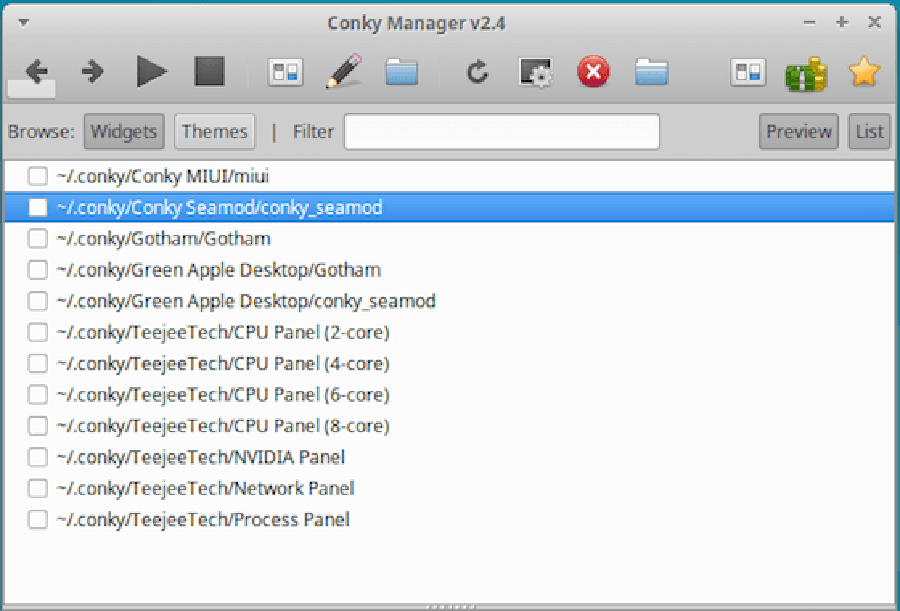Kanboard is a free and open source project management tool that uses the Kanban methodology. It focuses on minimalism and simplicity, it is mainly designed for small teams. It also helps you to manage your projects and visualize your workflow.
This article assumes you have at least basic knowledge of Linux, know how to use the shell, and most importantly, you host your site on your own VPS. The installation is quite simple and assumes you are running in the root account, if not you may need to add ‘sudo’ to the commands to get root privileges. I will show you through the step by step installation Kanboard open source project management on an Ubuntu 16.04 Xenial Xerus server.
Install Kanboard on Ubuntu 16.04 LTS
Step 1. First make sure that all your system packages are up-to-date
sudo apt-get update
sudo apt-get upgrade
Step 2. Install LAMP (Linux, Apache, MariaDB, PHP) server.
A Ubuntu 16.04 LAMP server is required. If you do not have LAMP installed, you can follow our guide here. Also install all required PHP modules:
apt-get install php7.0-mysql php7.0-curl php7.0-json php7.0-cgi php7.0 libapache2-mod-php7.0 php7.0-mcrypt php7.0-xmlrpc php7.0-gd
Step 3. Installing Kanboard.
First, Download and unzip the latest version of Kanboard:
cd /var/www/html/
wget https://kanboard.net/kanboard-latest.zip
unzip kanboard-latest.zip
We will need to change some folders permissions:
chown -R www-data:www-data /var/www/html/kanboard/
Next, copy the included config.default.php to config.php and change the database information by using these commands:
cd /var/www/html/kanboard
mv config.default.php config.php
Create a configuration file named config.php using nano editor and enter the following contents into the file:
### nano /etc/config.php
// Database driver: sqlite, mysql or postgres (sqlite by default)
define('DB_DRIVER', 'mysql');
// Mysql/Postgres username
define('DB_USERNAME', 'kanboard');
// Mysql/Postgres password
define('DB_PASSWORD', 'kanboarduser_passwd');
// Mysql/Postgres hostname
define('DB_HOSTNAME', 'localhost');
// Mysql/Postgres database name
define('DB_NAME', 'kanboarduser');
Step 4. Configuring MariaDB for Kanboard.
By default, MariaDB is not hardened. You can secure MariaDB using the mysql_secure_installation script. you should read and below each steps carefully which will set root password, remove anonymous users, disallow remote root login, and remove the test database and access to secure MariaDB:
mysql_secure_installation
Configure it like this:
- Set root password? [Y/n] y
- Remove anonymous users? [Y/n] y
- Disallow root login remotely? [Y/n] y
- Remove test database and access to it? [Y/n] y
- Reload privilege tables now? [Y/n] y
Next we will need to log in to the MariaDB console and create a database for the Kanboard. Run the following command:
mysql -u root -p
This will prompt you for a password, so enter your MariaDB root password and hit Enter. Once you are logged in to your database server you need to create a database for Kanboard installation:
MariaDB [(none)]>CREATE USER 'kanboarduser'@'localhost' IDENTIFIED BY 'password';
MariaDB [(none)]>GRANT ALL PRIVILEGES ON kanboarduser.* TO 'kanboard'@'localhost' IDENTIFIED BY 'password' WITH GRANT OPTION;
MariaDB [(none)]>FLUSH PRIVILEGES;
MariaDB [(none)]>exit;
Import the Kanboard Database Schema:
cd /var/www/html/kanboard
mysql -u kanboard -p kanboard < app/Schema/Sql/mysql.sql
Step 5. Configuring Apache web server for Kanboard.
Create a new virtual host directive in Apache. For example, create a new Apache configuration file named ‘kanboard.conf’ on your virtual server:
sudo a2enmod rewrite
touch /etc/apache2/sites-available/kanboard.conf
ln -s /etc/apache2/sites-available/kanboard.conf /etc/apache2/sites-enabled/kanboard.conf
nano /etc/apache2/sites-available/kanboard.conf
Add the following lines:
<VirtualHost *:80>
ServerAdmin [email protected]
DocumentRoot /var/www/html/kanboard
ServerName your-domain.com
ServerAlias www.your-domain.com
<Directory /var/www/html/kanboard>
Options FollowSymLinks
AllowOverride All
Order allow,deny
allow from all
</Directory>
ErrorLog /var/log/apache2/your-domain.com-error_log
CustomLog /var/log/apache2/your-domain.com-access_log common
</VirtualHost>
Now, we can restart Apache web server so that the changes take place:
sudo a2ensite kanboard
systemctl restart apache2.service
Step 5. Accessing Bolt Kanboard.
Kanboard will be available on HTTP port 80 by default. Open your favorite browser and navigate to http://yourdomain.com/kanboard or http://server-ip/kanboard.
Congratulation’s! You have successfully installed Kanboard. Thanks for using this tutorial for installing Kanboard open source project management on your Ubuntu 16.04 LTS. For additional help or useful information, we recommend you to check the official Kanboard web site.







